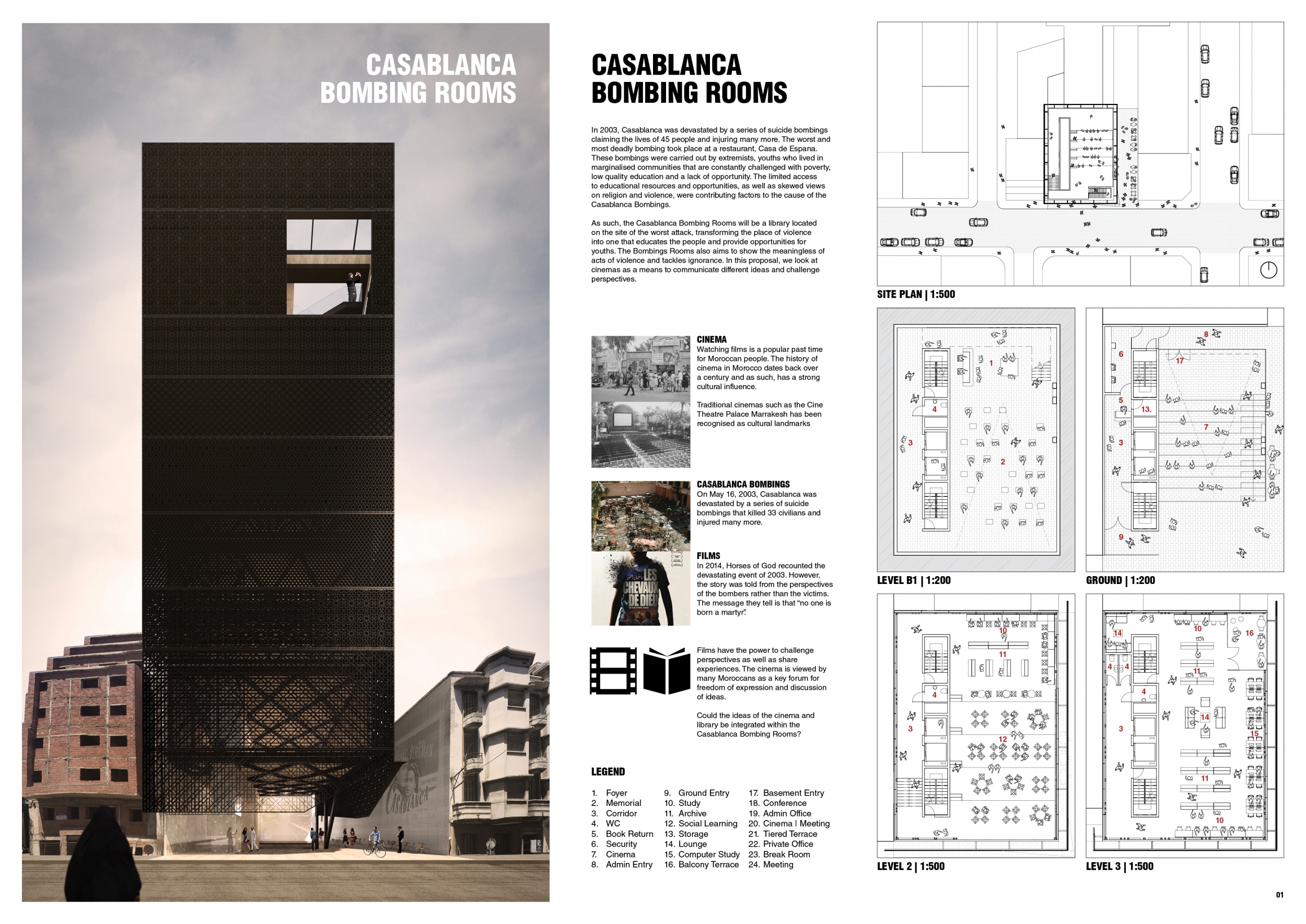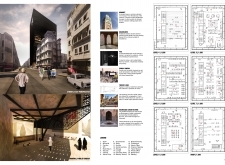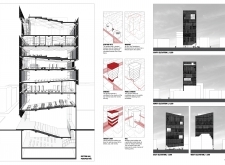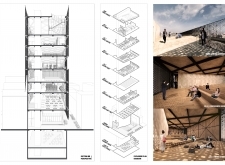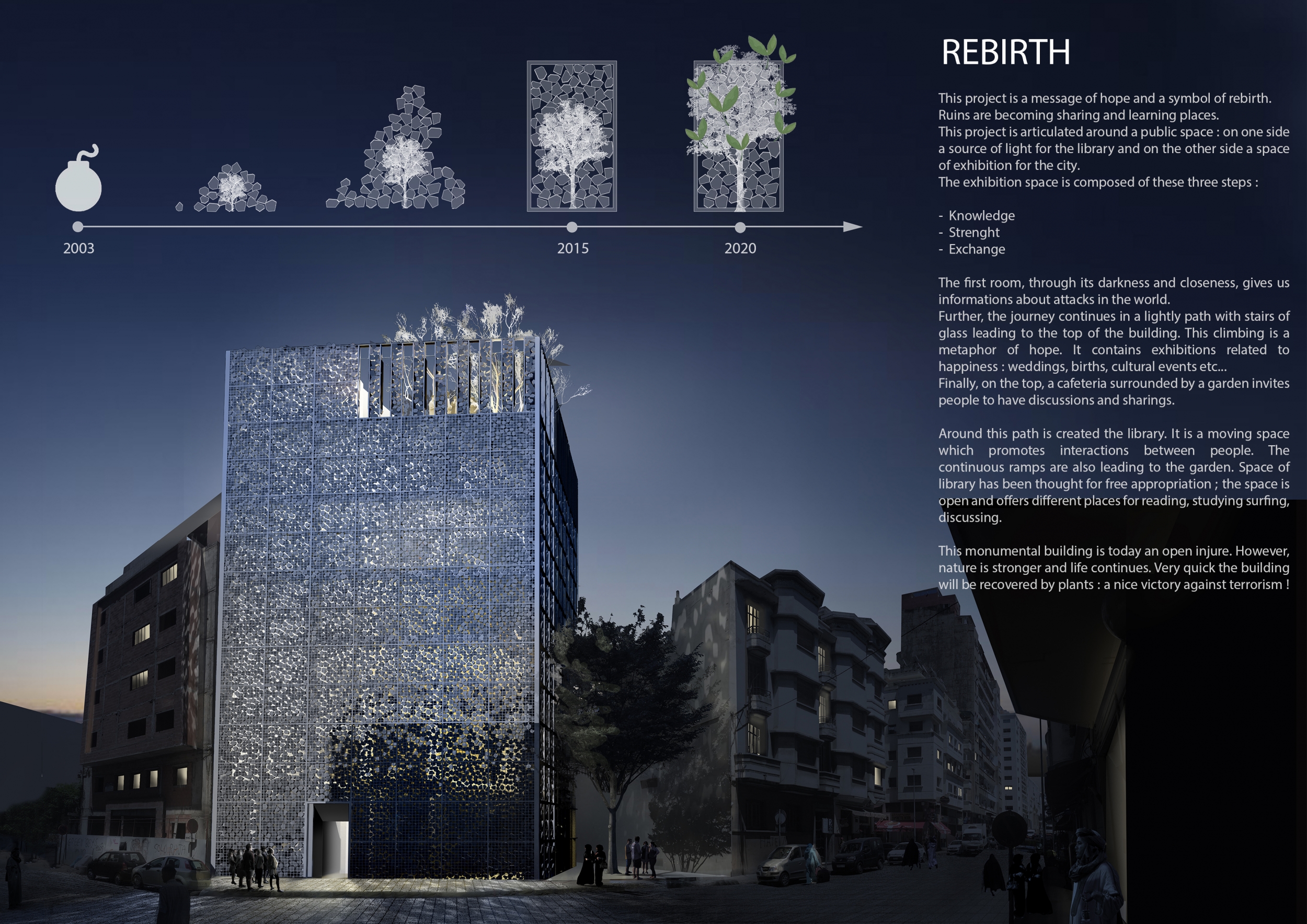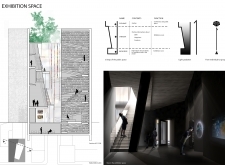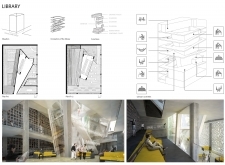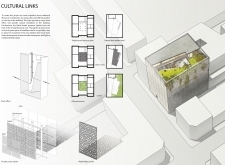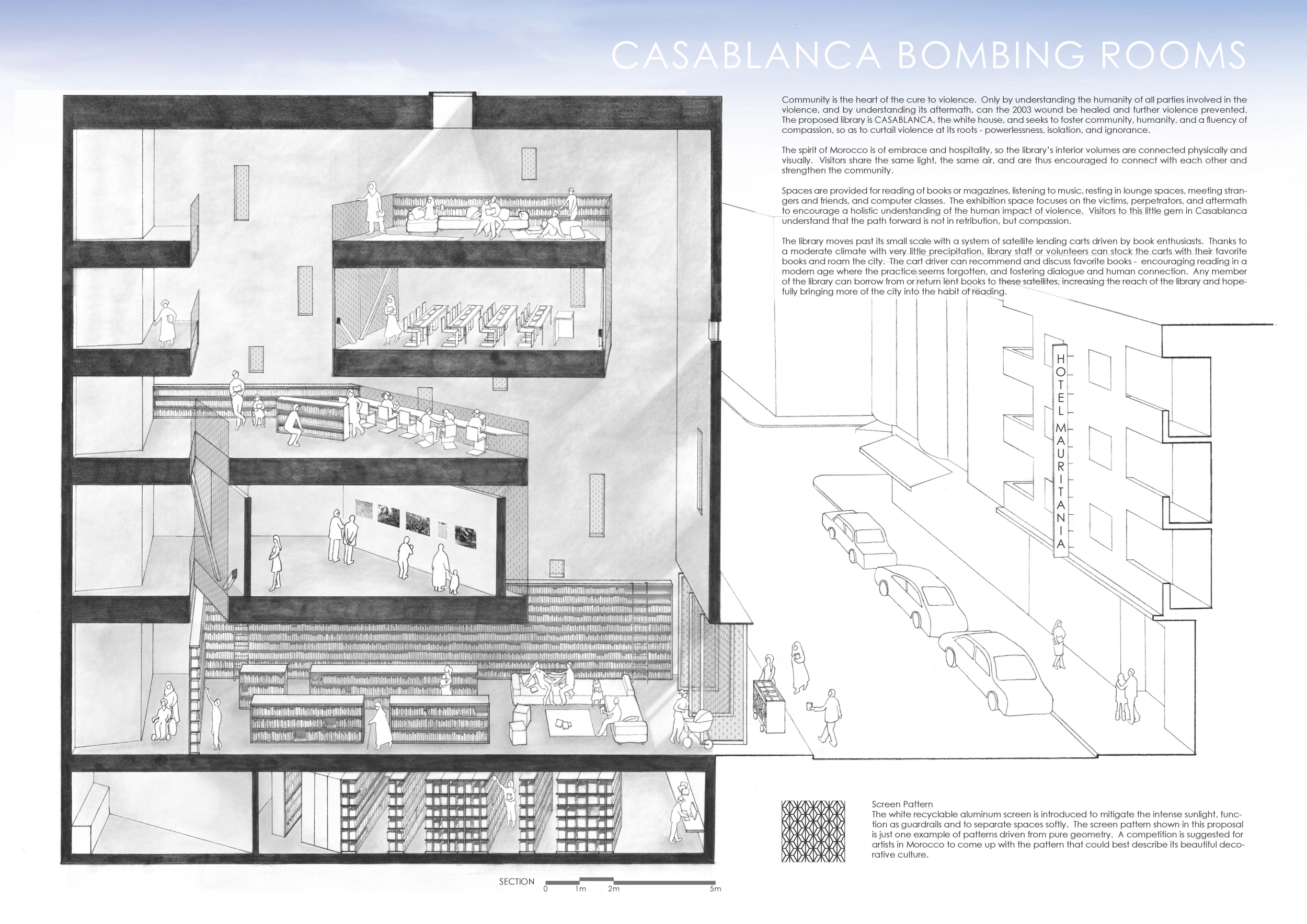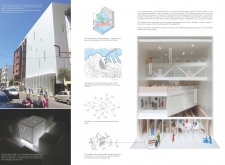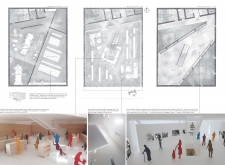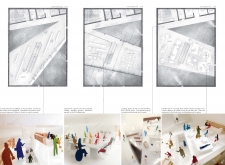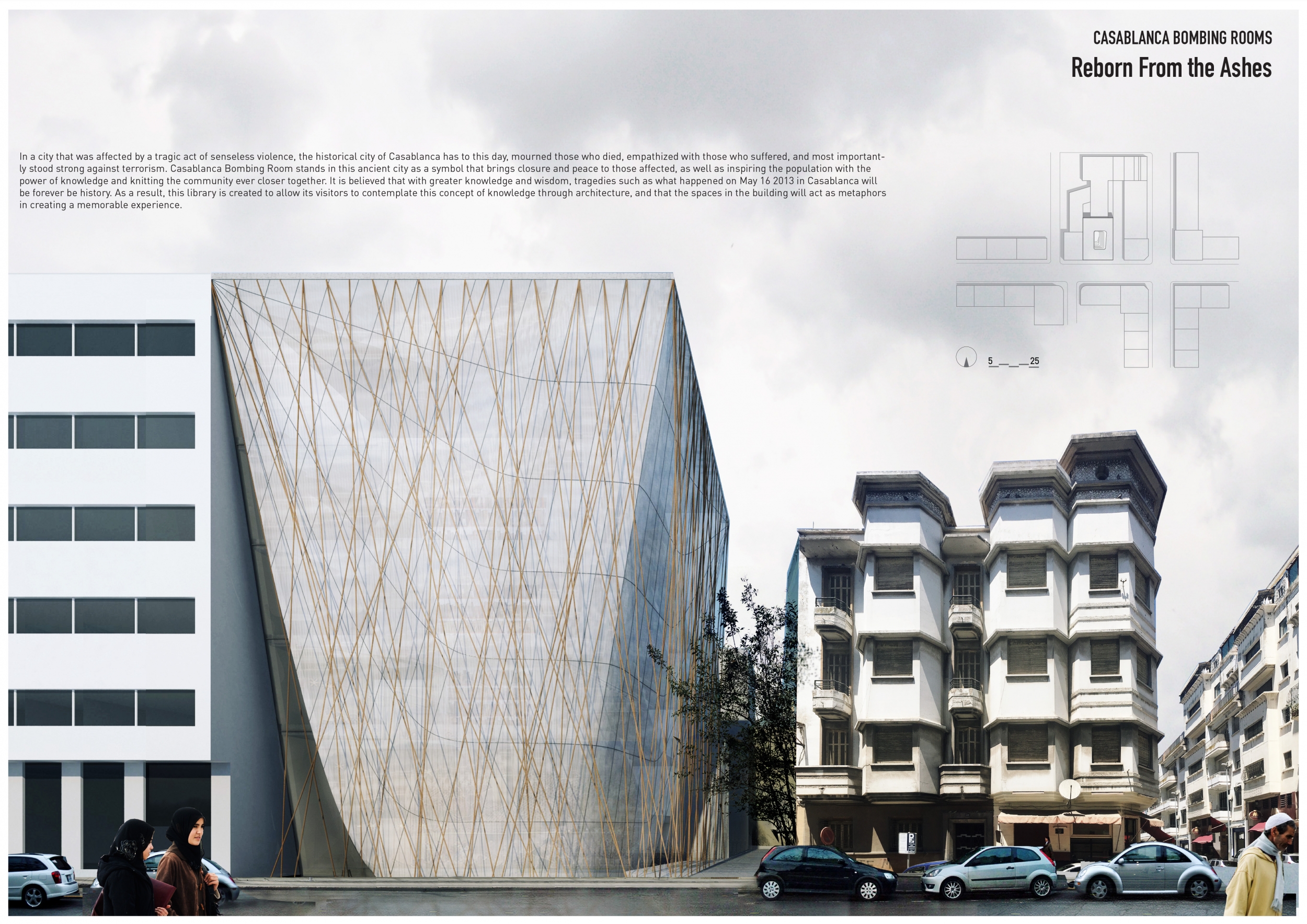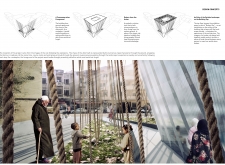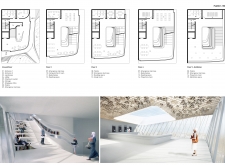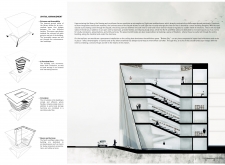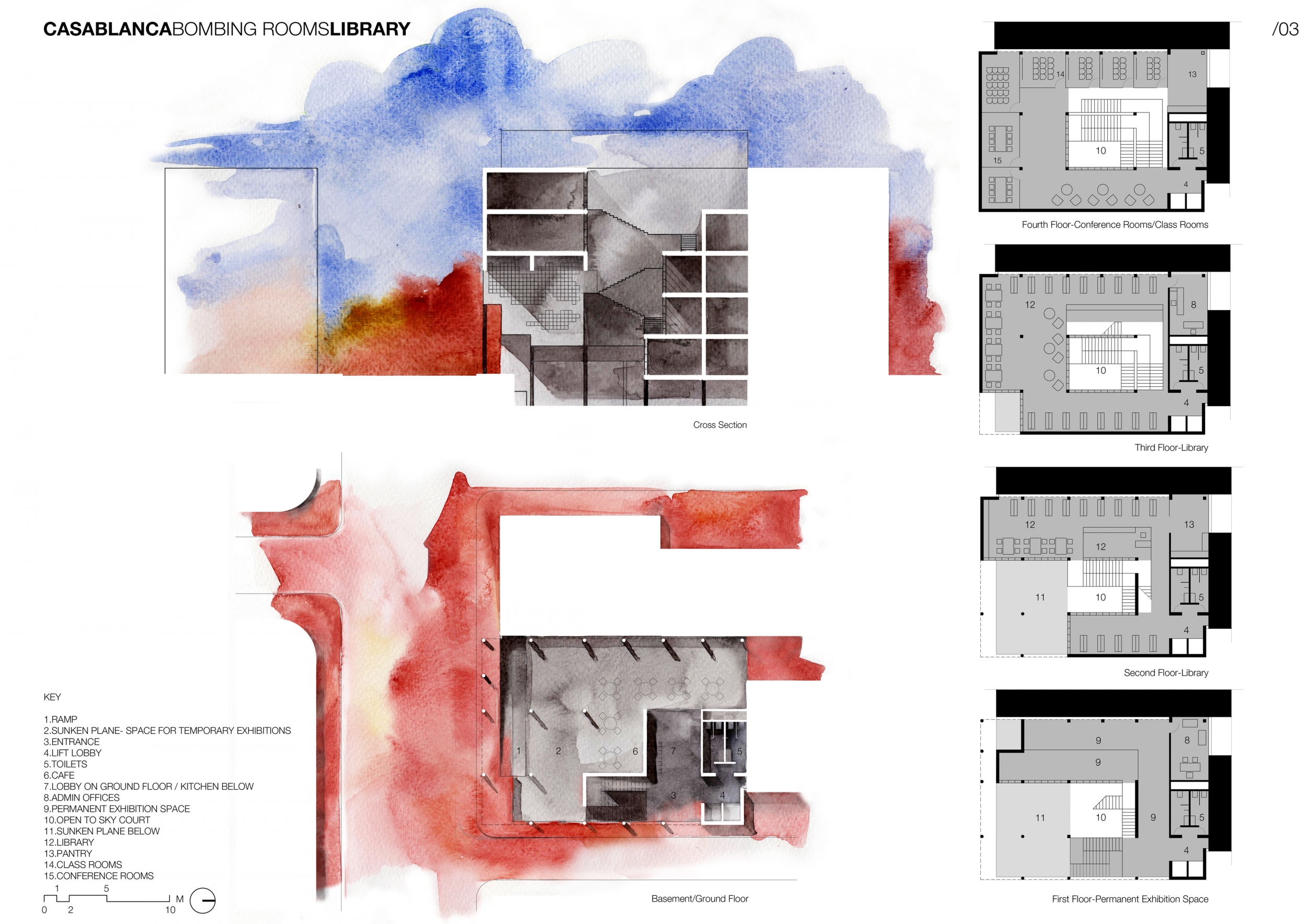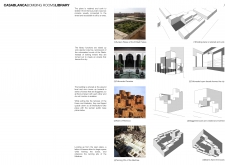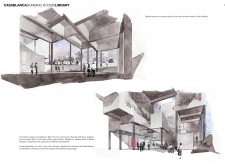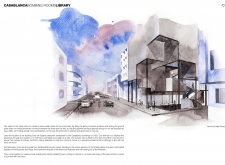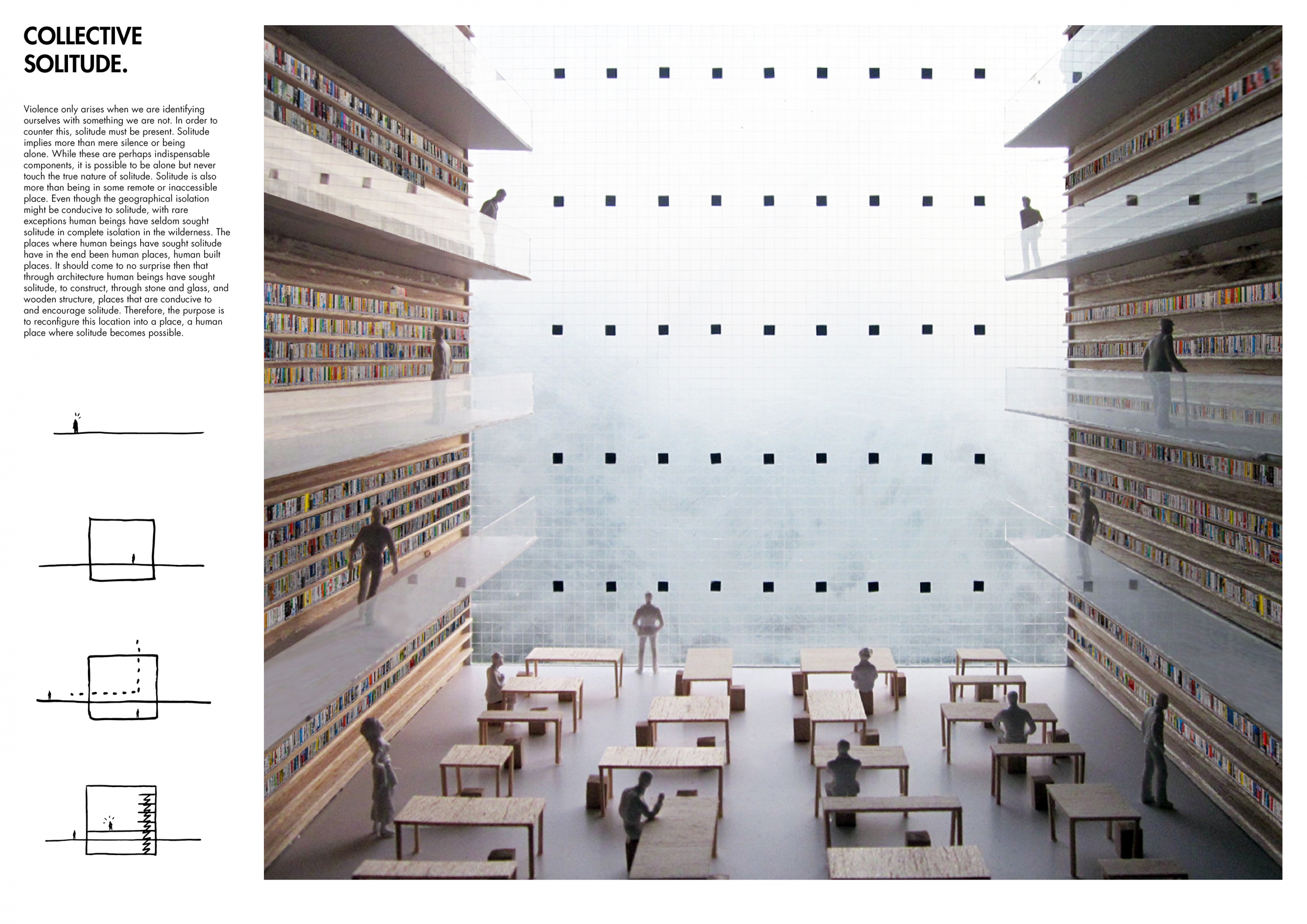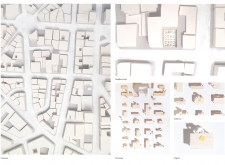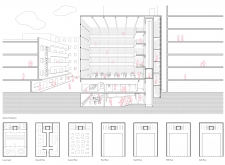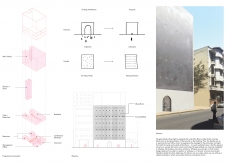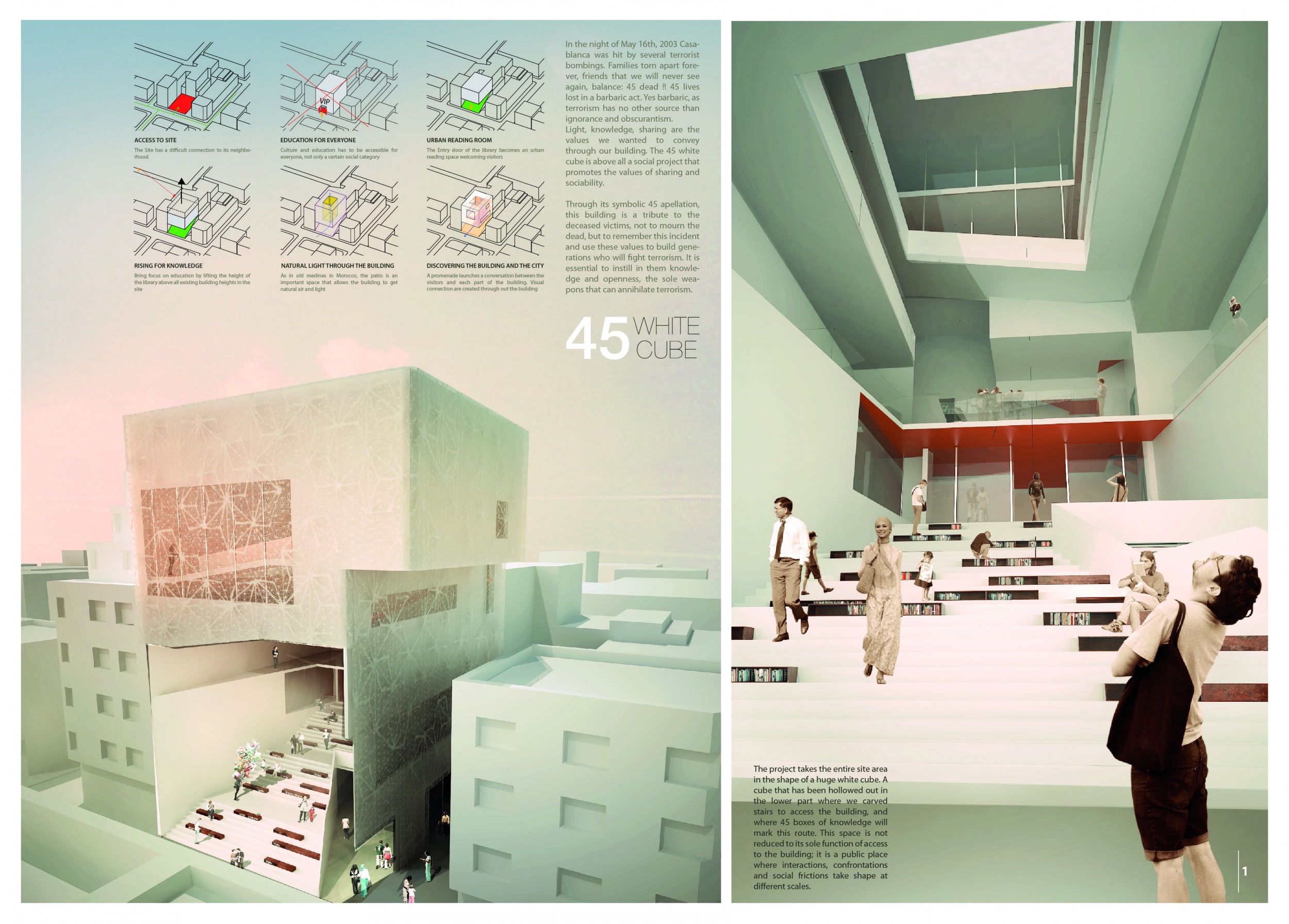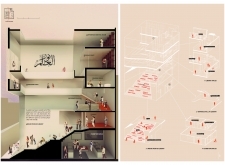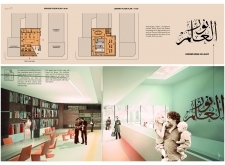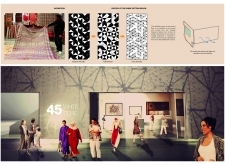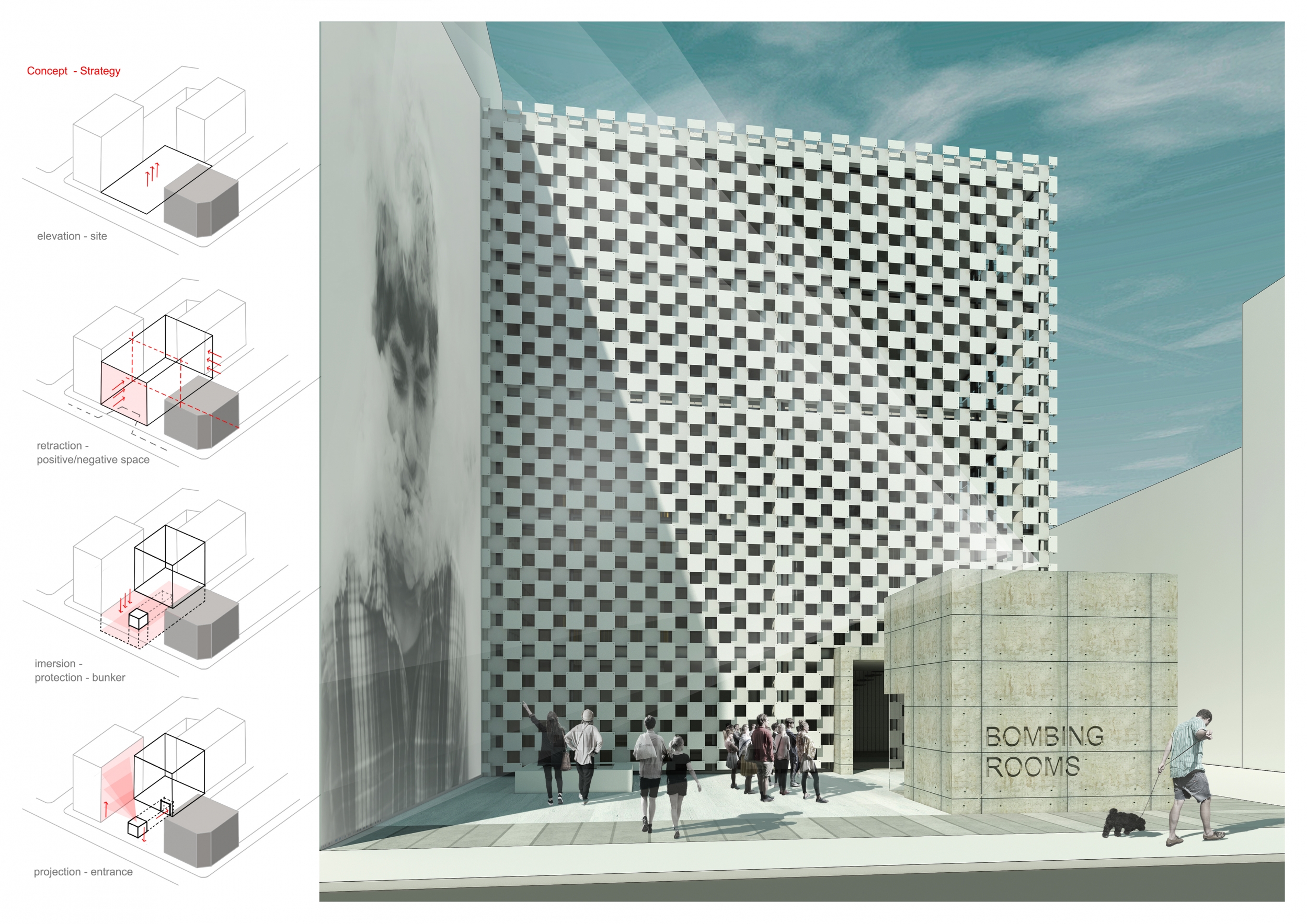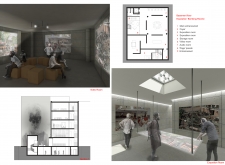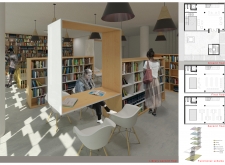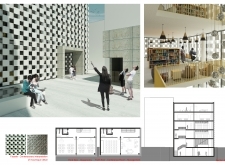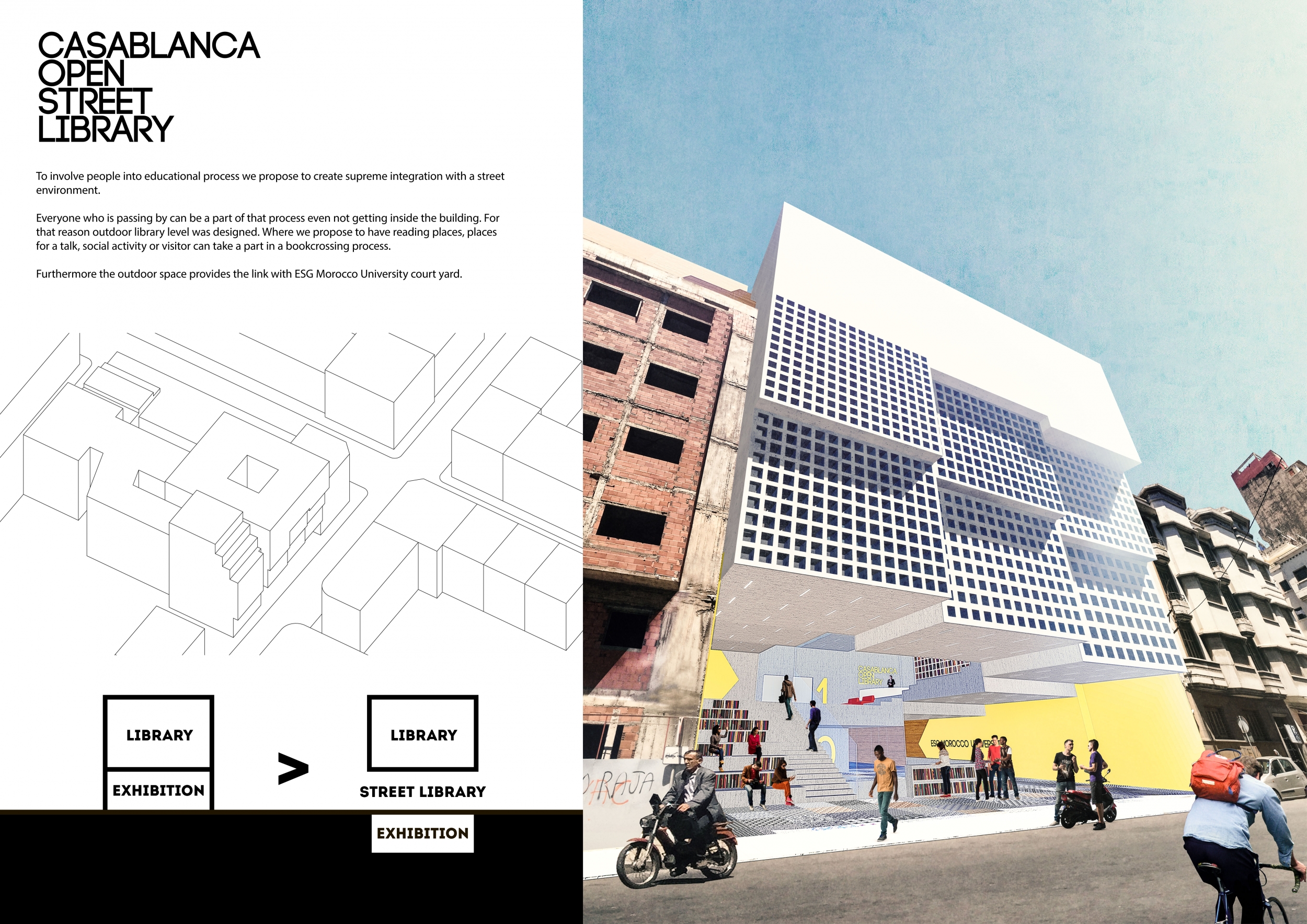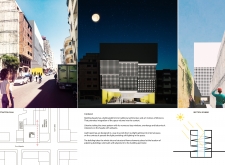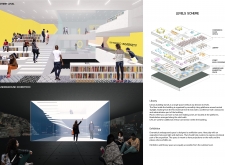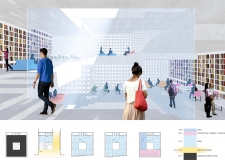Introduction
Rooted in a context of tragedy, the Casablanca Bombing Rooms seek to bring together the local community for collective gathering, learning, and cultural exchange in the quest for peace. As such, the library / exhibition space / cultural center is tasked with raising awareness as well as fulfilling its role as a social destination in Casablanca. The diverse program calls for a variety of spaces, ranging from dark to light, solitary to collective, and passive versus active. Given the range of demands, the judges placed particular focus on proposals that wove together each of these constraints in a clear and concise manner, while also honoring the memory of the nearby bombing.
Each entry was evaluated on a number of criteria, including but not limited to: strength and clarity of concept, originality, quality of presentation, appropriateness to context, and most importantly, its strength as a public community center capable of raising awareness against violence and encouraging group involvement. The research exhibited in these competition entries is not only applicable to this site, but also addresses the larger question of how to promote non-violence in the wake of tragic events around the world.
Competition results in media publications
1st Prize Winner
CASABLANCA BOMBING ROOMS
Competitions offer a great way of benchmarking our School’s work against the international community. Our students respond well to the discipline of the competition forum and it extends their imagination to think about different, often exotic sites and cultures. Plus the problems are often intriguing, the briefs well set out and models for clarity and succinctness.
Read full interview Australia
Australia
Jury feedback summary
The Casablanca Bombing Rooms, characterized by a large black tower, offers a civic-oriented public library and learning center for Casablanca and its surrounding region. Although it appears quite simple, it is instead a series of layered concepts, each subtly reinforcing the others and lending an overall richness and cultural rootedness to the final product.
2nd Prize Winner
CASABLANCA BOMBING ROOMS
We participate in vision competitions because it is an opportunity to think about architecture beyond the routine limitations that we have in everyday work. It is chance to train creativity and to compete with professionals all over the world. Vision competitions make architects dream!
Read full interview China
China
Jury feedback summary
Rebirth positions itself as a phoenix, rising up from the ashes [of the bombing] to transcend violence through collective knowledge and learning. The ‘rebirth’ name is fitting considering the proposal’s loose references to Buddhist temple typologies in which one circumambulates a path of ascension towards enlightenment and nirvana.
3rd Prize Winner
CASABLANCA BOMBING ROOMS
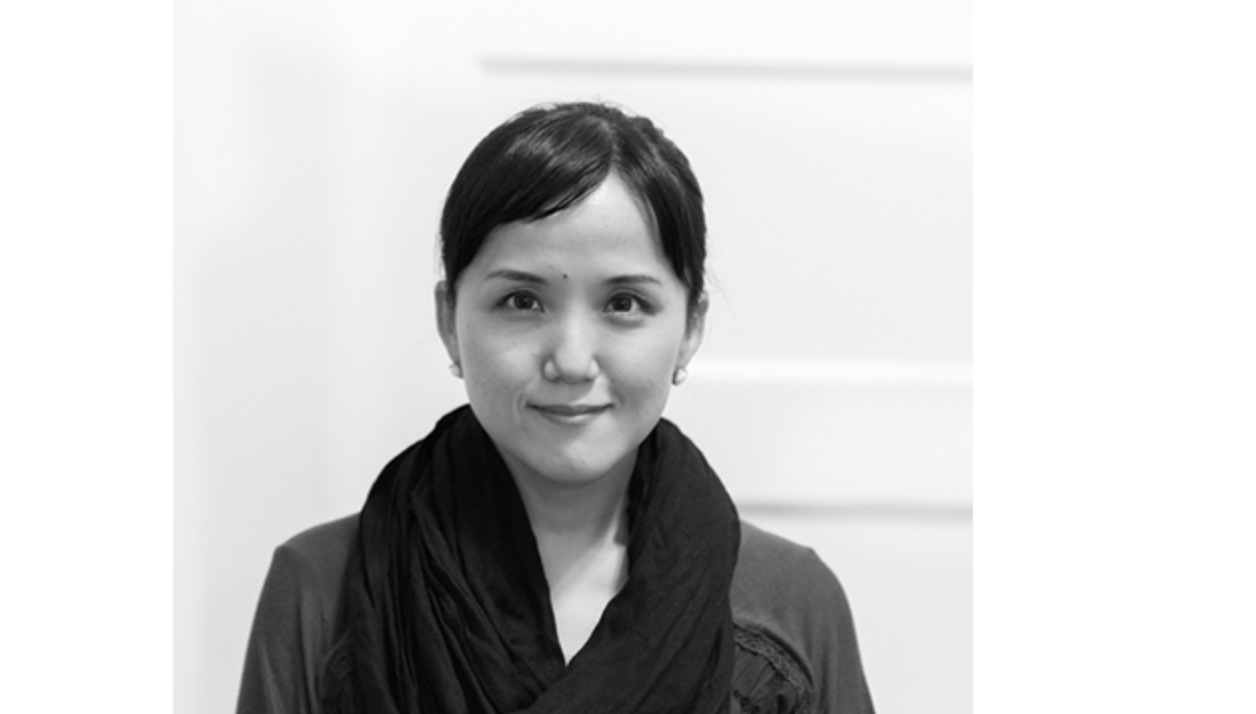
It is my pleasure to provide a lens for people to see the world differently. Emotional attachment to a space can happen even through two dimensional presentation boards. If the viewers of my project imagine visiting the space I designed, think what they would do in this space, have a little smile on their faces, start to expand their imagination, and gradually grow attached to this potential of a place, that’s the reason to participate in this kind of competition. These competitions are a great opportunity to think about the link between architecture and society, and that can only strengthen my vision.
Read full interview Japan
Japan
Jury feedback summary
CASABLANCA, a project focused on community outreach and collective knowledge, is a clean proposal that directly addresses the task of educating the greater public about non-violence. In addition to offering a well-designed library on site, CASABLANCA features a series of satellite carts that can be spread throughout the greater metropolitan region so that the impact of the library reaches far beyond its walls.




